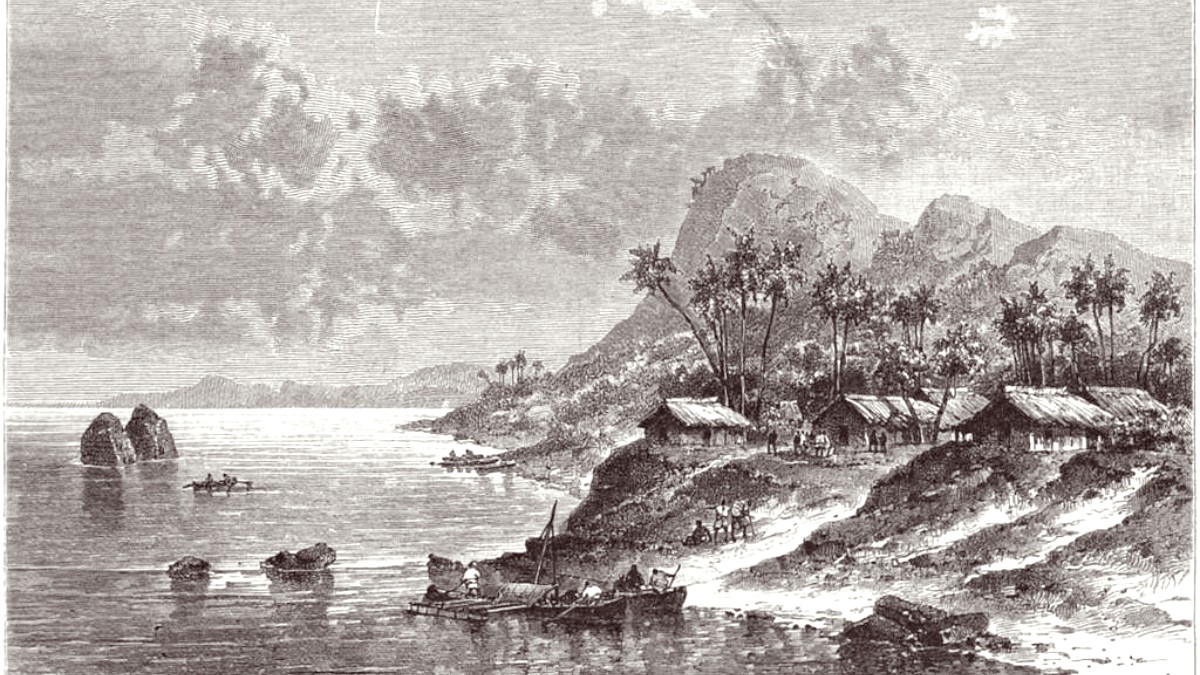
Marquesas Islands, Tahiti And French Polynesia
The islanders' close relationship with their environment shapes the food. Staples like breadfruit, taro, and fresh seafood have sustained the Marquesan people for generations. European arrivals introduced new ingredients and French cooking styles, integrating into the local diet. Freshness and simplicity highlight the natural flavors of the ingredients.
Meals, especially at pensions, are social affairs. Guests often dine together, providing chances to interact with hosts and fellow travelers. Wait for everyone to be served before eating.
Learning a few Marquesan phrases, like "Kaoha nui" (hello) and "Mauruuru" (thank you), is appreciated by your hosts. If a guest in a private home, offer to help or bring a small gift.
Breakfast: 7:00-8:30 AM (fruit, bread, coffee). Lunch: 12:00-1:00 PM (lighter, often from a local "snack"). Dinner: 6:30-7:30 PM (main, substantial meal at pensions).
The quintessential Polynesian dish. Fresh raw fish (often tuna), cut into cubes, marinated in lime juice, and mixed with creamy coconut milk. Diced vegetables complete the dish.
A must-try for its freshness, available everywhere.
A traditional Polynesian feast often cooked in an umu (earth oven), where food slow-cooks over hot stones. A ma'a Tahiti typically holds slow-cooked pork, chicken, breadfruit, taro, fe'i banana, and taro leaves cooked in coconut milk.
Prepared for special occasions or by pensions that offer cultural experiences.
A versatile staple of the Marquesan diet. Breadfruit prepares in many ways: roasted over an open fire, boiled, fried into chips, mashed, or cooked in coconut milk.
Try it in different forms to appreciate its subtle flavor and texture.
"Snacks," which are small, informal eateries or food trucks, yield the most affordable and authentic meals. They typically serve grilled fish or chicken with rice and fries, or simple sandwiches. They are great for a quick and satisfying lunch.
Fresh tropical fruits are the main snack and dessert. Enjoy the abundance of mangoes, bananas, papayas, and other seasonal fruits.
Very limited. Any "fine dining" on Nuku Hiva is usually found within a few higher-end pensions or small hotels in Taiohae that cater to their guests.
A few informal restaurants operate in Taiohae. For example, the restaurant at Hotel Moana Nui provides sit-down meals.
"Snacks" in Taiohae yield the most affordable and local dining experiences. Look for them near the market or along the main road.
The market in Taiohae sells fresh produce and sometimes offers prepared foods, especially in the mornings when cargo ships arrive with fresh supplies.
A great place to pick up fresh fruits for snacks.
Limited. Most international cuisine confines to French-influenced dishes available at pensions and hotels, or very basic Chinese/Asian fusion options at some "snacks."
Diverse international restaurants are not available.
Straight from a freshly cut green coconut, it forms a refreshing and hydrating drink.
Made from local mangoes, papayas, or pineapples are widely available and delicious.
Beer (Hinano is the local brand) and imported wines and spirits are available, but they are expensive due to import taxes.
Coffee often accompanies breakfast at pensions and small cafes.
Your guesthouse host is your best resource. They often prepare meals for guests and adapt if informed.
Communicate your dietary needs to your guesthouse well in advance of your arrival. They are often flexible and willing to accommodate, but they need time to prepare.
Bringing some of your own essential snacks or supplements is advisable, especially for specific dietary requirements that might be hard to meet locally.
This reduces stress and ensures adherence to your diet.
Marquesan cooking often utilizes traditional methods, sometimes meaning long cooking times for meats and root vegetables in earth ovens.
The local market offers fresh produce, providing an opportunity to select ingredients for self-prepared meals if your accommodation allows.
Dining in a local pension, often family-style, yields an unique cultural immersion. This communal mealtime forms a chance to connect with your hosts and other travelers.
The experience of eating food cooked in an umu earth oven marks an unique highlight, representing an ancient Polynesian culinary tradition.
A typical presentation of Poisson Cru, highlighting its fresh ingredients and colors. This dish embodies the essence of Polynesian cuisine.
Communicate your dietary needs to your guesthouse well in advance of your arrival. They are often flexible and willing to accommodate.
They need time to prepare specific requests.
Options can be limited, specifically for strict diets like Halal, Kosher, or complex allergen-aware dining.
Bringing your own snacks can aid adherence to specific dietary requirements.
Dining out at restaurants beyond "snacks" can be more expensive compared to meals included at pensions. Budget accordingly.
Much of the produce and seafood consumed on the island is locally sourced, providing a fresh and authentic culinary experience.
Breadfruit, or 'Uru', appears as a core starch in almost every meal, highlighting its significance in the Marquesan diet.
Embrace the local cuisine! While Nuku Hiva may not possess a wide array of international dining, its authentic Marquesan food, steeped in tradition and fresh ingredients, yields a memorable and culturally enriching experience.